Overview
This article highlights the significance of effective business mission statements for tech startups, illustrating how they articulate purpose and foster connections with audiences. Many startup founders grapple with the challenge of defining their mission, which can lead to feelings of uncertainty and disconnection. A well-crafted mission statement not only guides startups through challenges but also nurtures brand loyalty and aligns with consumer values.
By examining successful examples from established companies like Microsoft, Patagonia, and Tesla, we can see how clear mission statements have empowered these organizations to thrive. As you navigate your own startup journey, remember that a strong mission statement can be a beacon of clarity and purpose, helping you to connect deeply with your audience and stay true to your vision.
Introduction
Crafting a compelling mission statement is an essential journey for technology startups seeking to define their identity and connect with their audience. These statements act as guiding principles, illuminating a company's purpose and aspirations, while nurturing brand loyalty.
However, many startups find themselves grappling with the challenge of articulating their mission effectively. This struggle can lead to confusion and missed opportunities in an increasingly competitive landscape.
How can emerging tech companies create mission statements that resonate deeply with their core values and inspire meaningful action and engagement among consumers?
Let's explore this together, as we understand the importance of a clear mission in fostering connection and driving success.
RNO1: Crafting Mission Statements that Drive Digital Growth
In today's fast-paced world, technology startups often grapple with the challenge of developing a business mission statement sample that clearly articulates their purpose. This struggle can lead to confusion about their goals and hinder their ability to connect with their audience, as outlined in a business mission statement sample. At RNO1, we understand the weight of this challenge and are here to help. Our expertise lies in crafting purpose declarations that truly resonate with modern technology brands, utilizing design methodologies that enhance branding, user experience, and digital marketing strategies. This approach ensures that your purpose declaration not only conveys your company's goals but also inspires action and engagement.
We recognize that technology startups face unique hurdles, and developing a business mission statement sample is essential for articulating core values and objectives to build a strong digital presence. When your business mission statement sample is clearly defined, it acts as a guiding light, helping you navigate your digital journey and forge meaningful connections with your audience. As Paula Ferrai, RNO1's Marketing & Communications team lead, insightfully shares, 'Only once you have a clear vision and purpose for your company will you know where you are headed.' This clarity is especially vital considering that 42% of startup failures are linked to misinterpreting market demand. A well-defined purpose can steer you toward a deeper understanding of the market, setting the stage for success.
Our transformative approach is reflected in our partnerships with esteemed brands like Microsoft and RentMethod, where we've driven scalable brand growth and supported successful acquisitions. Client testimonials speak volumes about RNO1's impact, highlighting our role in reshaping branding strategies and aiding technology firms in expressing their objectives while maximizing their Return On Design & Digital (RODD) strategies. We are committed to walking alongside you on this journey, ensuring that your startup not only survives but thrives in an increasingly competitive landscape.
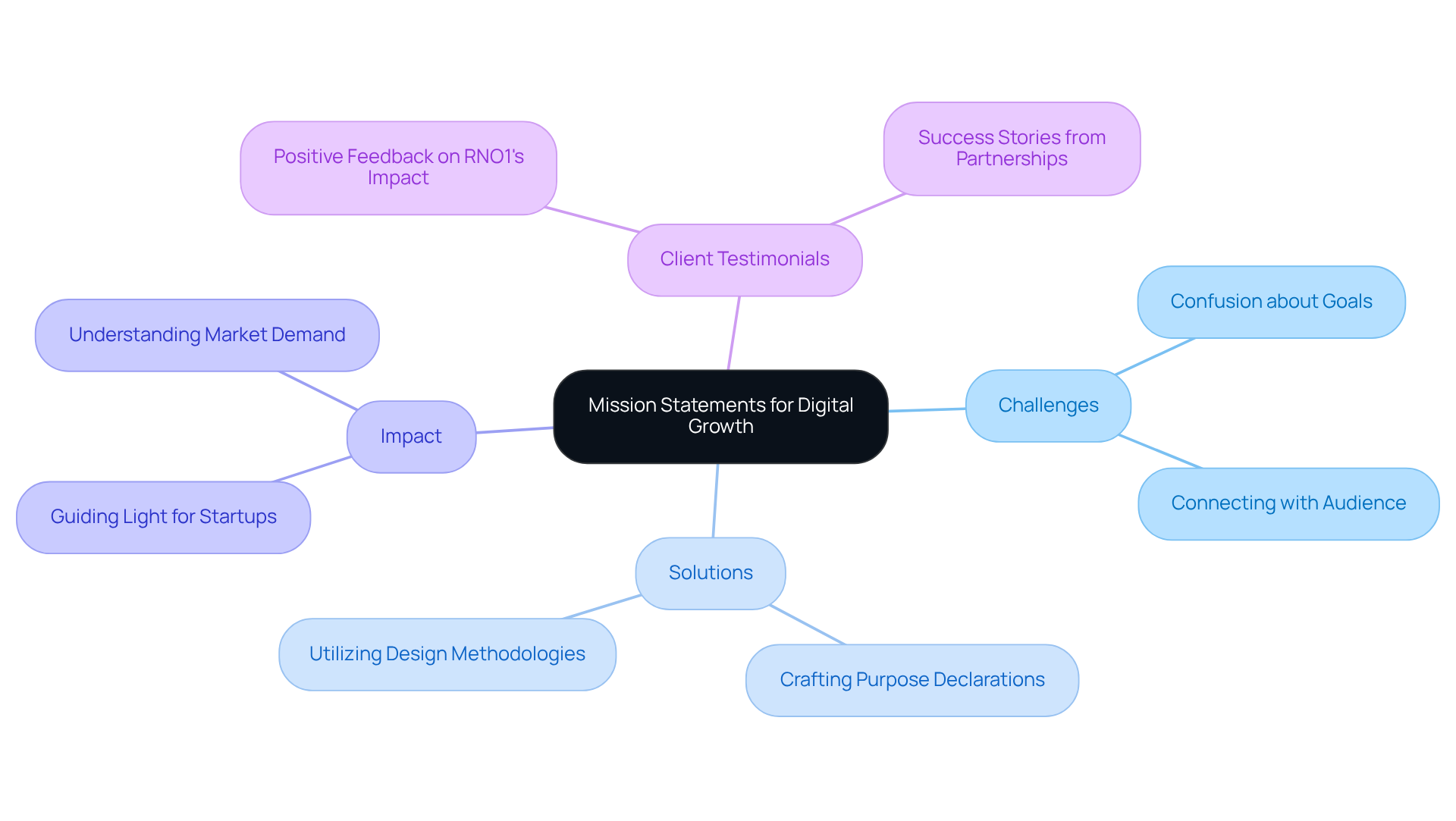
Microsoft: Empowering Every Person and Organization to Achieve More
Microsoft's mission statement, 'to empower every person and every organization on the planet to achieve more,' beautifully encapsulates a commitment to inclusivity and innovation. This guiding principle not only shapes the company's offerings but also serves as an inspiring model for technology ventures striving to establish a strong brand identity.
Many startups face the challenge of fostering a culture of empowerment that resonates with both employees and customers, leading to deeper engagement and loyalty. RNO1's strategic rebranding of Founder's Haven exemplifies this approach, focusing on empowering modern founders for digital success through innovative solutions tailored for eCommerce and technology.
As Satya Nadella emphasizes, this objective is about creating an environment where everyone can thrive. Startups can significantly enhance their influence in the competitive technology landscape by developing a business mission statement sample that reflects their core values and aspirations.
To truly embrace this approach, technology companies should consider practical steps, such as:
- Involving team members in creating a business mission statement sample
- Ensuring clarity and brevity
- Regularly revisiting the declaration to keep it relevant
By doing so, they not only empower their teams but also build a community that nurtures growth and innovation.
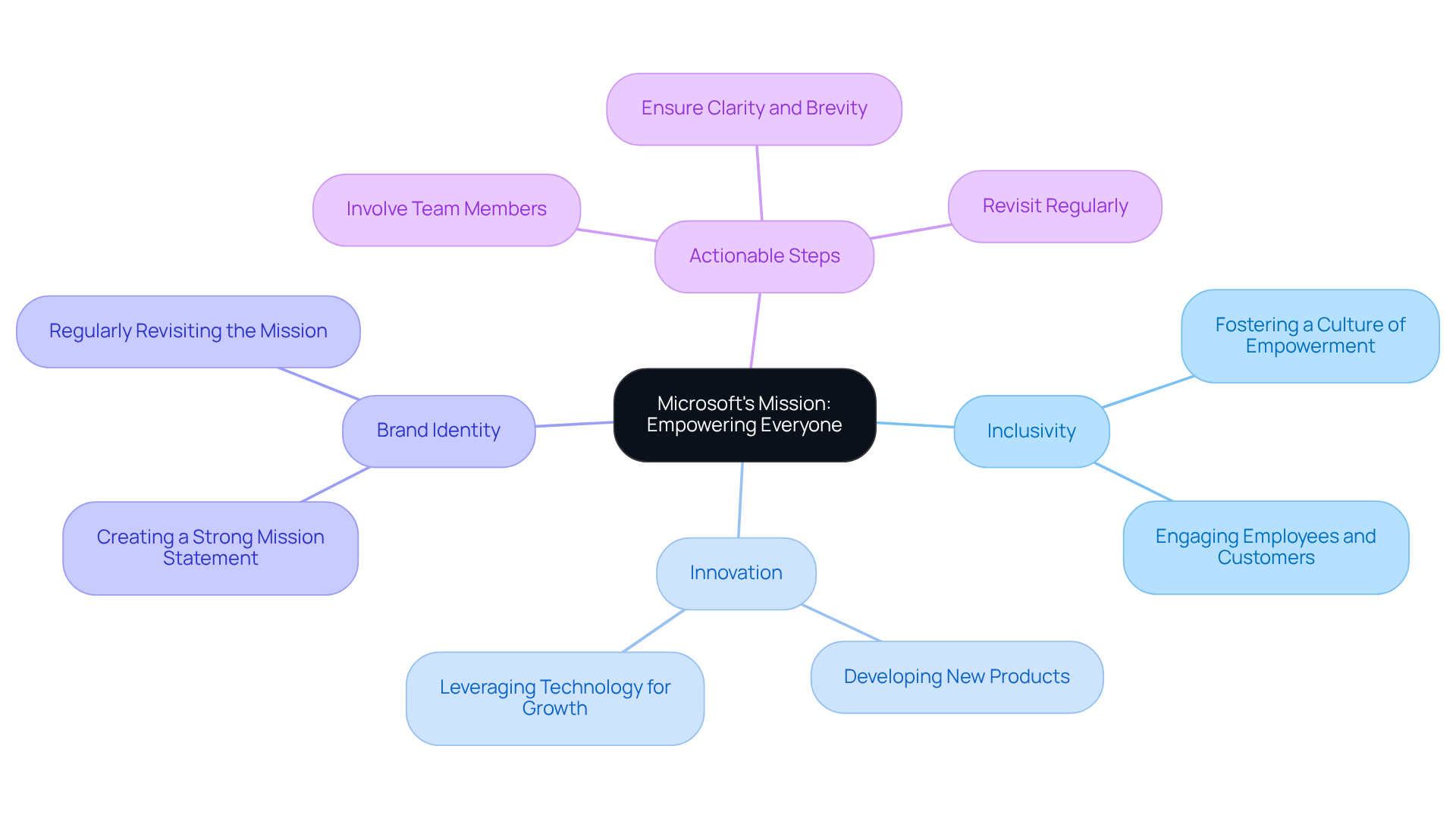
Patagonia: Building the Best Product While Causing No Unnecessary Harm
Patagonia's objective, 'to build the best product while causing no unnecessary harm,' serves as a powerful reminder of our responsibility to the environment. This commitment to sustainability is not just a guiding principle for product development; it fundamentally shapes the brand's identity. However, many technology ventures may overlook this vital aspect, risking disconnection with a growing community of environmentally conscious consumers.
Research shows that:
- 91% of Gen Z consumers favor sustainable companies, emphasizing the urgent need for businesses to align their values with those of their customers.
- Brands that prioritize sustainability enjoy enhanced consumer loyalty.
- When over half of their sales come from ESG-related products, repeat purchase rates can soar to an impressive 32-34%.
By embracing a purpose similar to Patagonia's, technology startups can carve out a unique market position while fostering deeper relationships with consumers who prioritize ethical practices. This alignment not only attracts customers but also nurtures a loyal community that values responsible innovation.
It’s worth noting that:
- 76% of consumers would stop supporting businesses that disregard environmental and community welfare.
This statistic underscores the pressing need for technology companies to integrate sustainability into their core objectives. Together, we can create a future where innovation and responsibility go hand in hand.
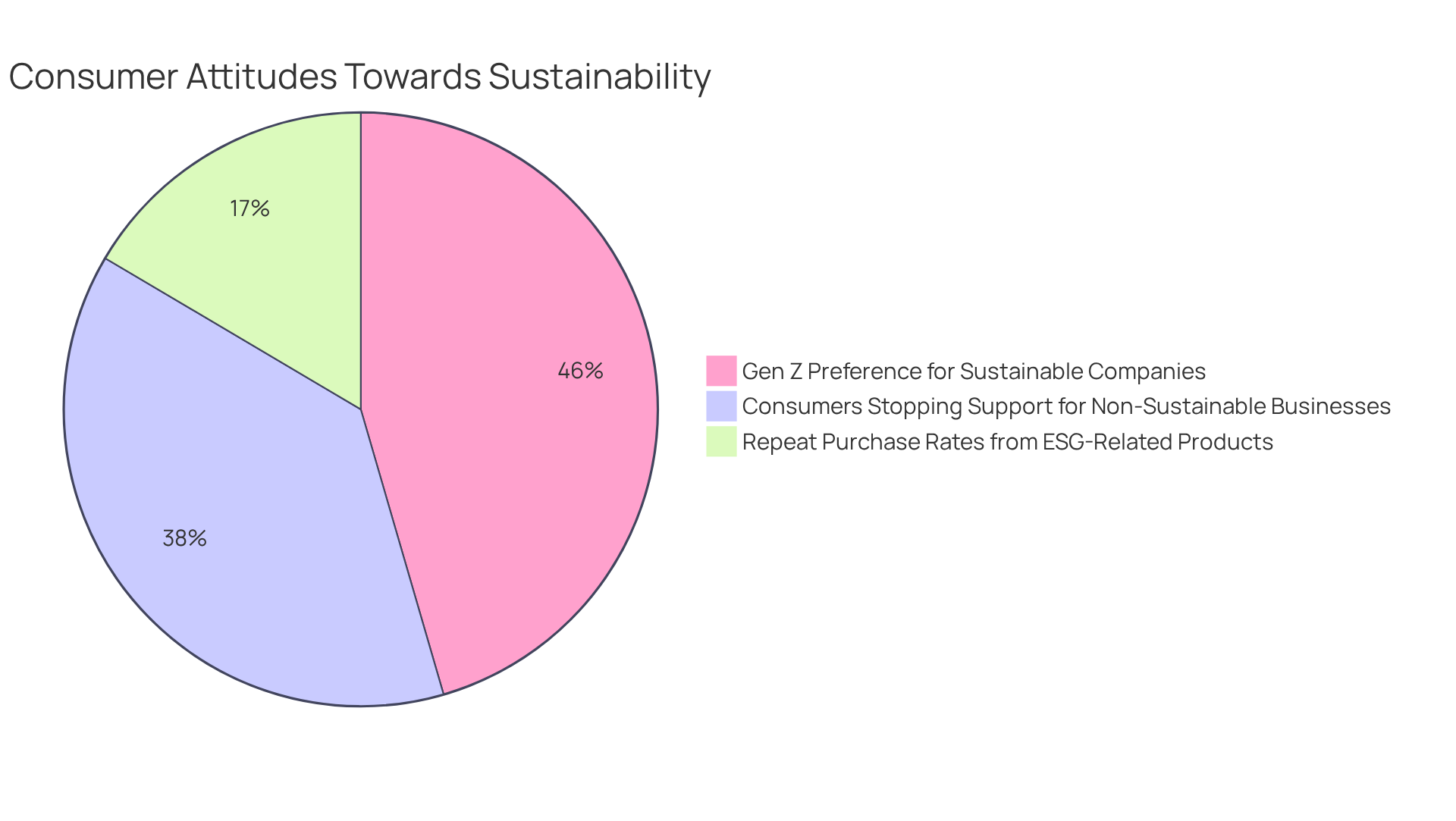
Starbucks: Inspiring and Nurturing the Human Spirit, One Cup at a Time
Starbucks' purpose, 'to inspire and nurture the human spirit - one person, one cup, and one neighborhood at a time,' beautifully illustrates a deep commitment to customer experience and community engagement. This philosophy not only fosters a loyal customer base but also nurtures a positive brand image.
For technology startups, adopting a similar approach can be transformative. By prioritizing customer relationships and social impact, these companies can stand out in a crowded marketplace. Innovative strategies, like scaling omnichannel brand ambassador programs through influencer partnerships and executing national user-generated content initiatives, can significantly enhance e-commerce engagement and community involvement.
Research indicates that 81% of organizations view customer experience as a vital competitive differentiator, underscoring the importance for new businesses to engage meaningfully with their communities. Moreover, brands that actively promote transparency and community involvement tend to cultivate customer loyalty, with 94% of consumers expressing greater allegiance to brands that are open about their practices.
As Blake Morgan wisely states, 'Without a customer focus, companies simply won’t be able to survive.' Therefore, technology enterprises can leverage community involvement and influencer promotion to shape their brand identity, ensuring their business mission statement sample resonates with customers and reflects a commitment to making a positive impact.
Furthermore, with 86% of consumers willing to abandon a brand after just two negative experiences, it becomes crucial for new businesses to uphold high service standards in their community engagement efforts.
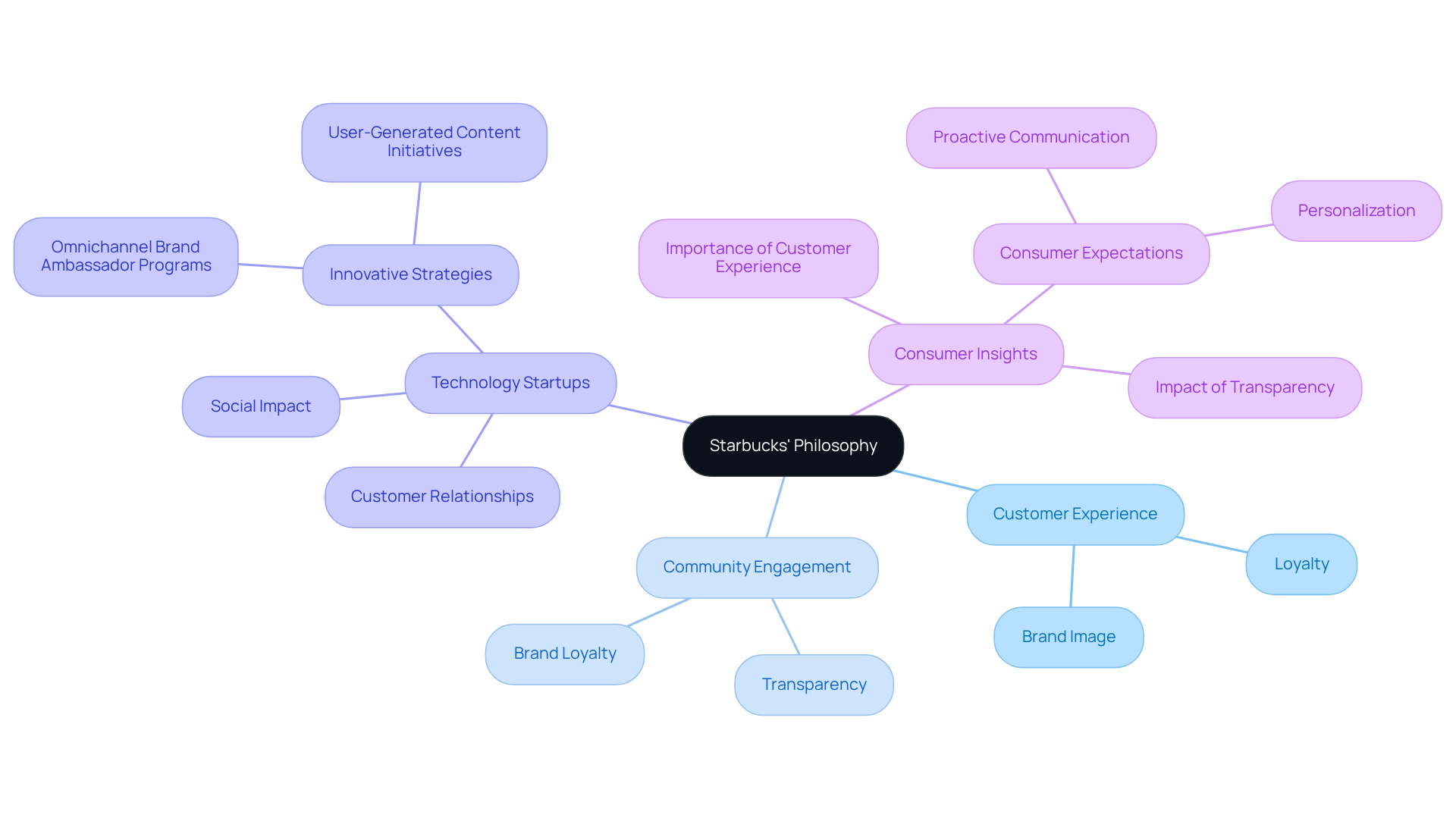
Tesla: Accelerating the World's Transition to Sustainable Energy
Tesla's objective, 'to accelerate the world's transition to sustainable energy,' highlights a pressing challenge we all face: the need for a more sustainable future. This challenge is not just a corporate responsibility; it's an opportunity for companies to emerge as leaders in innovation and environmental stewardship.
For technology ventures, establishing a purpose that directly addresses these urgent issues can set them apart in a crowded marketplace. It resonates deeply with consumers who are increasingly prioritizing sustainability in their purchasing decisions. In fact, a significant 62% of consumers often seek out sustainable products when they shop, reflecting a growing demand for brands that commit to eco-friendly practices.
Moreover, 79% of consumers who are aware of brands communicating their sustainability efforts are likely to trust those messages. By aligning their missions with global challenges, startups can foster a community of loyal customers who share their values. This connection not only enhances brand perception but also contributes to a broader movement toward sustainability and innovation within the technology sector.
Together, we can drive engagement and build a brighter, more sustainable future.
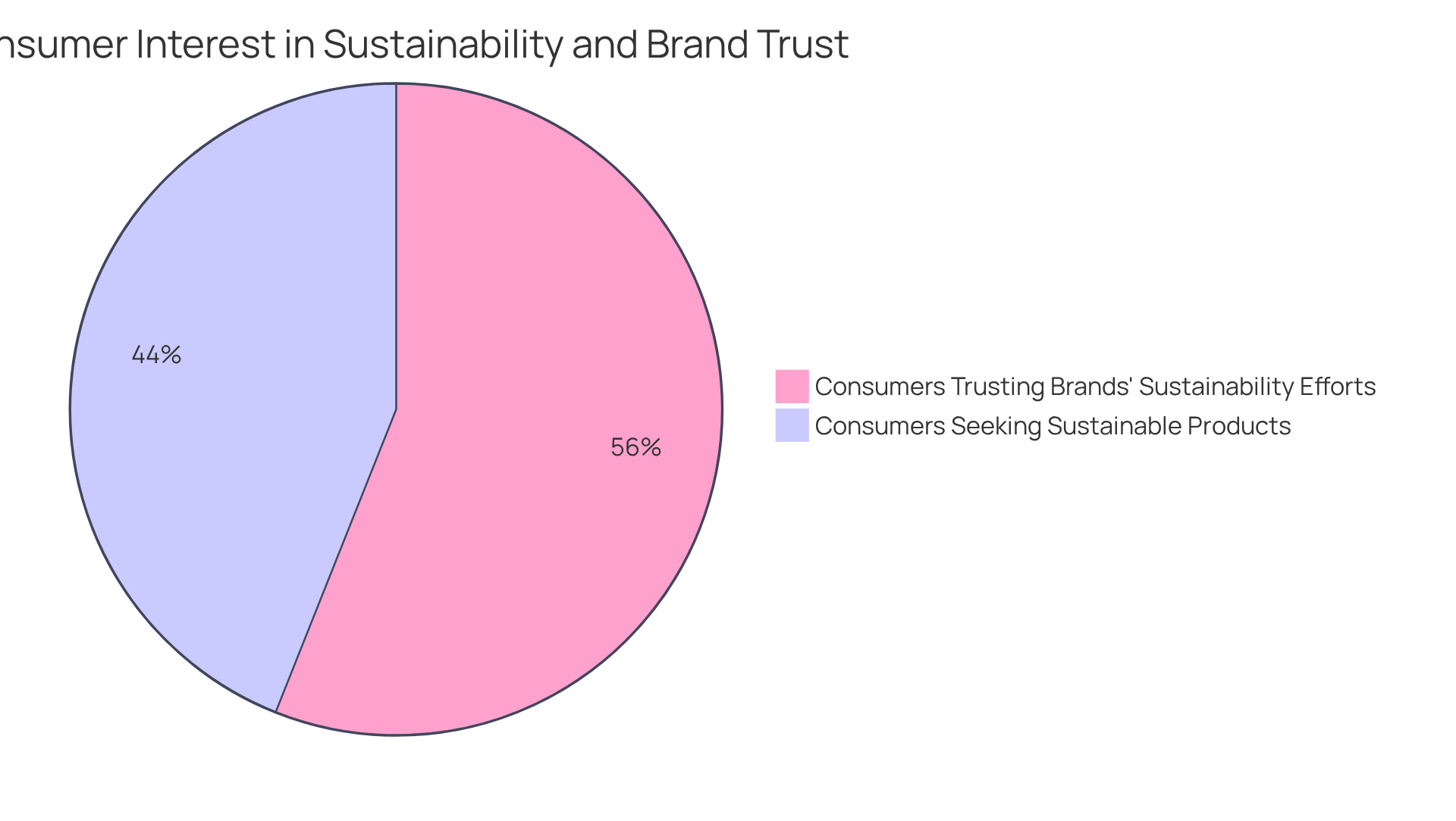
Nike: Bringing Inspiration and Innovation to Every Athlete in the World
Nike's objective, 'to bring inspiration and innovation to every athlete in the world,' reflects a heartfelt commitment to inclusivity and motivation. This philosophy serves as a guiding light for new ventures aiming to create a business mission statement sample that resonates with diverse audiences. When startups prioritize inspiration and innovation, they can weave a compelling narrative that not only draws in customers but also nurtures a sense of belonging among users. This approach holds particular significance in the technology sector, where fostering inclusivity can greatly enhance customer engagement and brand loyalty.
For example, Nike's strategic emphasis on emotional connections has proven effective, as evidenced by their campaigns that resonate with various demographics, ultimately boosting sales and brand recognition. Similarly, RNO1's thoughtful rebranding of Founder's Haven underscores the importance of empowering contemporary founders for digital success, illustrating how a business mission statement sample can align with a broader vision.
By adopting a results-oriented strategy, as highlighted in RNO1's performance marketing expertise, new businesses can position themselves as leaders in their fields, nurturing innovation and forging meaningful connections with their audiences.
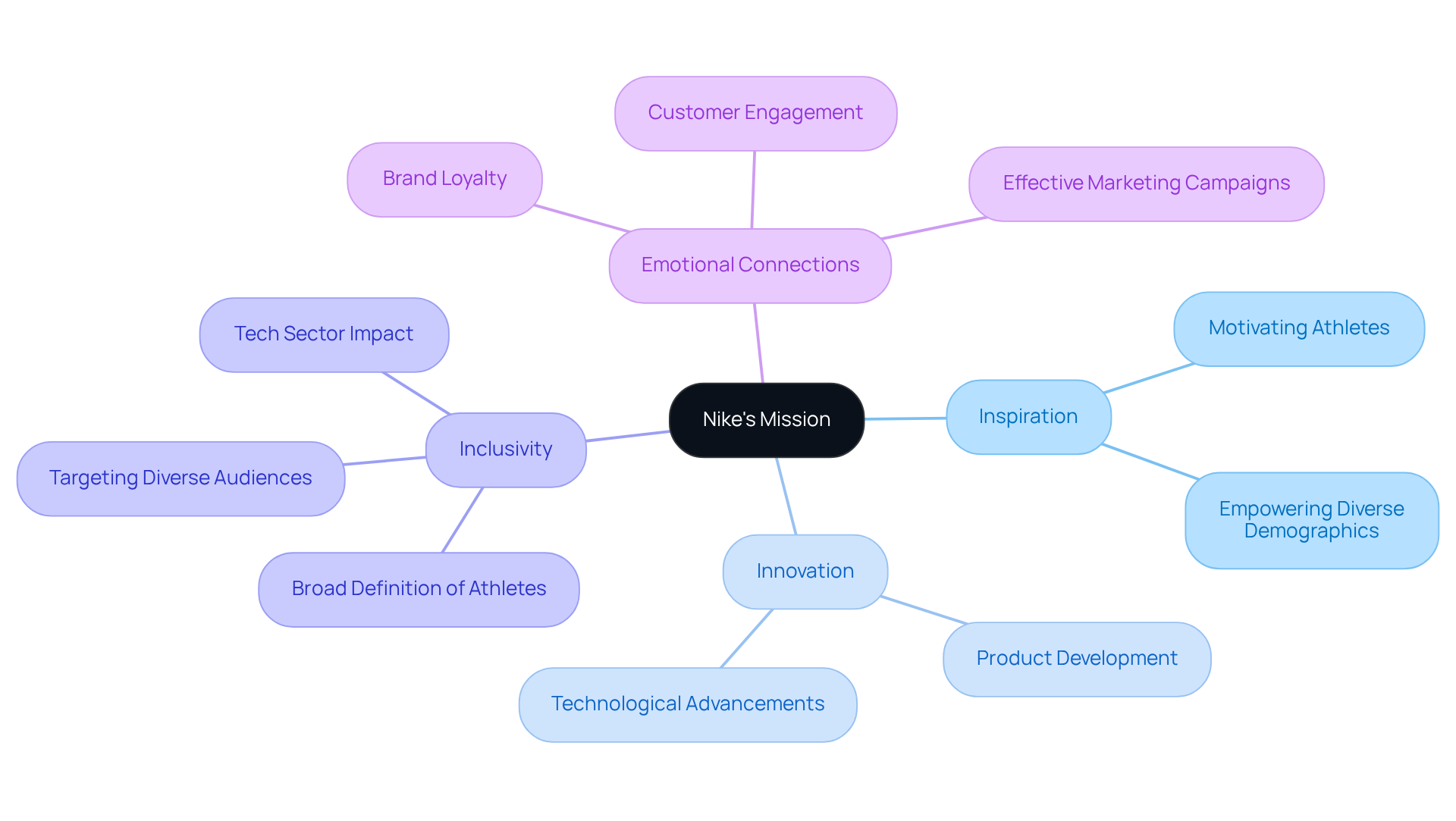
Google: Organizing the World's Information to Make It Universally Accessible and Useful
Google's objective, 'to organize the world's information and make it universally accessible and useful,' highlights a pressing issue in technology: the need for user-centric design. For many tech startups, the challenge lies in crafting a purpose declaration that underscores accessibility. This focus not only enhances user experience but also expands market reach, allowing companies to touch more lives. Cecilia Gillen wisely notes that a meaningful purpose declaration must be clear and concise, essential for conveying the significance of accessibility.
Imagine a startup that prioritizes the needs of all users. By doing so, they can build a strong brand identity that resonates with a diverse audience. This nurturing approach fosters inclusivity, enabling companies to connect with a wider customer base and enhance engagement. Reflecting on the success of industry leaders like Apple and Google, new ventures can draw inspiration from their effective purpose declarations that emphasize accessibility and resonate with today’s consumers.
RNO1 embodies this commitment to design-driven solutions, asserting that impactful design is crucial in every interaction. To weave accessibility into their core objectives, founders should consider using precise language that expresses their dedication to inclusivity and user experience. This thoughtful approach not only helps them stand out in a competitive market but also nurtures a community where every user feels valued and included. Together, we can create technology that truly serves everyone.
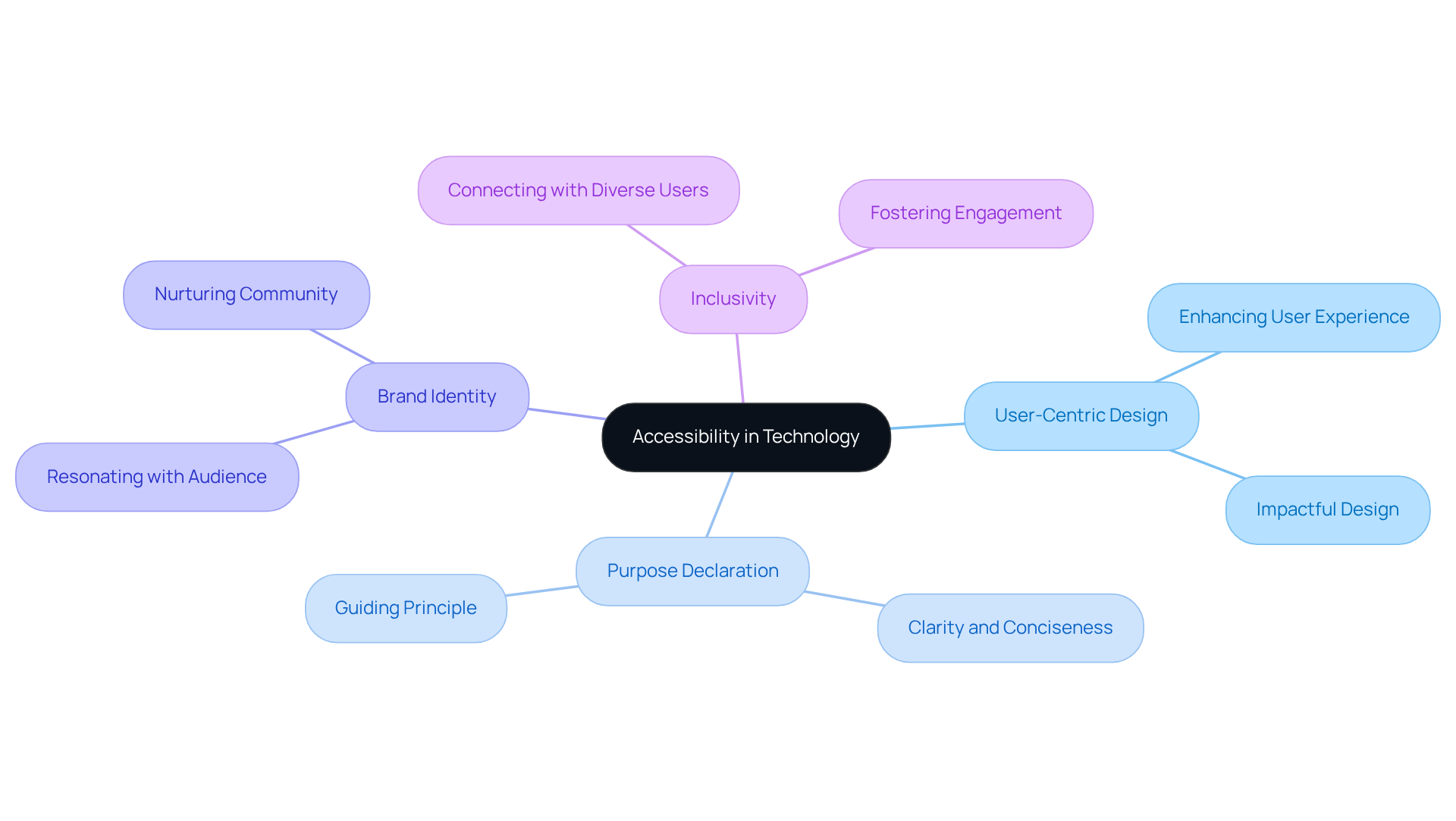
American Express: Providing Differentiated Products and Services to Help Customers Achieve Their Aspirations
American Express' objective, 'to provide differentiated products and services to help customers achieve their aspirations,' highlights a significant challenge many companies face: the need to truly understand their customers. For technology companies, this challenge can feel daunting. When there’s a disconnect between a company’s mission and the aspirations of its users, it can lead to frustration and missed opportunities. This misalignment not only affects product development and marketing strategies but also impacts the emotional connection that brands can build with their customers.
By fostering deeper connections, companies can inspire brand loyalty and contribute to their overall success. By prioritizing customer aspirations, new companies have the chance to create solutions that resonate deeply with their audience. This ensures that their offerings are not just innovative but also relevant and impactful.
Let’s embrace the journey of aligning our missions with the dreams of our customers, nurturing relationships that lead to shared success.
Warby Parker: Inspiring and Impacting the World with Vision, Purpose, and Style
Warby Parker's aim, 'to inspire and impact the world with vision, purpose, and style,' beautifully illustrates a commitment to social responsibility and accessible fashion. For many tech ventures, the challenge lies in crafting a business mission statement sample that resonates with a growing number of socially conscious consumers. It's important to recognize that 77% of consumers prefer to buy from companies actively engaged in CSR initiatives. This statistic underscores the critical nature of purpose-driven branding in today’s marketplace.
When startups prioritize purpose alongside innovation, they can effectively stand out in a competitive landscape, nurturing deeper connections with their customers. Imagine a world where 93% of employees believe that companies should lead with purpose—this alignment with consumer values not only strengthens brand loyalty but also positions new businesses as pioneers in the movement toward ethical practices.
However, neglecting CSR can lead to significant consequences. A striking 54% of consumers have ceased purchasing from a company due to its public stance on an issue. This highlights the inherent risks of failing to adopt socially responsible practices. By embracing a business mission statement sample that reflects both innovation and social impact, tech startups can not only meet consumer expectations but also foster a sense of community and support among their audience, paving the way for a brighter, more ethical future.
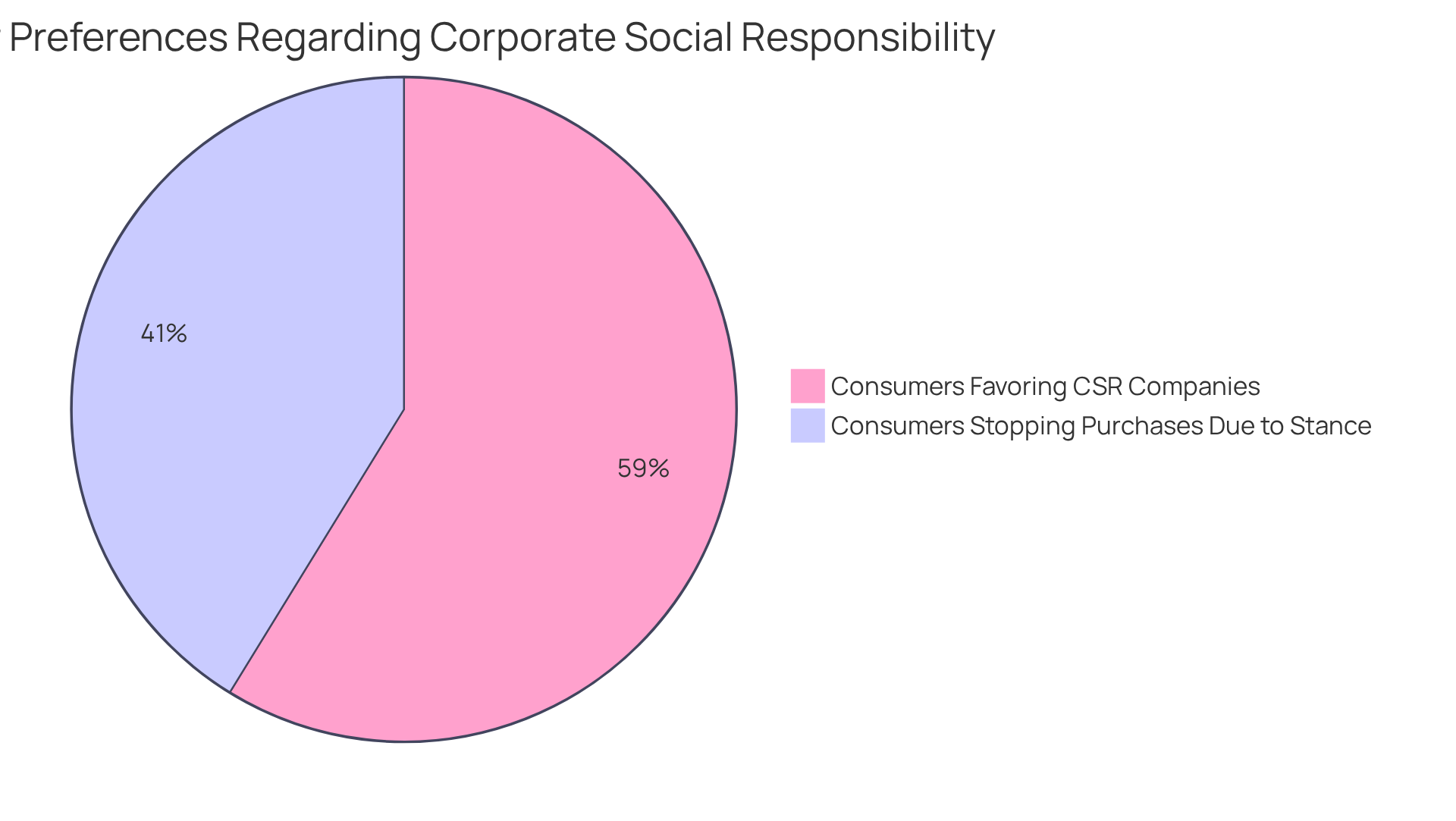
IKEA: Offering Well-Designed, Functional Home Furnishing Products at Affordable Prices
IKEA's objective, 'to provide well-designed, functional home furnishing products at affordable prices,' serves as a powerful reminder of the importance of accessibility and quality in today's market. This commitment not only positions IKEA as a leader in the furniture sector but also offers a vital lesson for technology companies. Many startups struggle to make their products appealing and accessible to a broader audience. By incorporating a business mission statement sample that embraces principles similar to IKEA's, these ventures can significantly enhance their market reach and product appeal.
When we prioritize customer needs and ensure product accessibility, we foster a strong brand identity that truly resonates with consumers. In a world where affordability is increasingly essential, technology companies have a unique opportunity to stand out by emphasizing functional design in their offerings. This thoughtful approach not only attracts a wider audience but also nurtures trust and loyalty among customers, ultimately paving the way for sustainable growth.
RNO1's commitment to design-focused solutions highlights the necessity for technology companies to weave meaningful design into their products. By concentrating on creating user-centric solutions that balance functionality and affordability, startups can elevate their brand marketability through effective Return On Design & Digital (RODD) strategies. These strategies underscore the significance of design in fostering customer engagement and satisfaction, creating a community of support for tech startup founders navigating these challenges together.
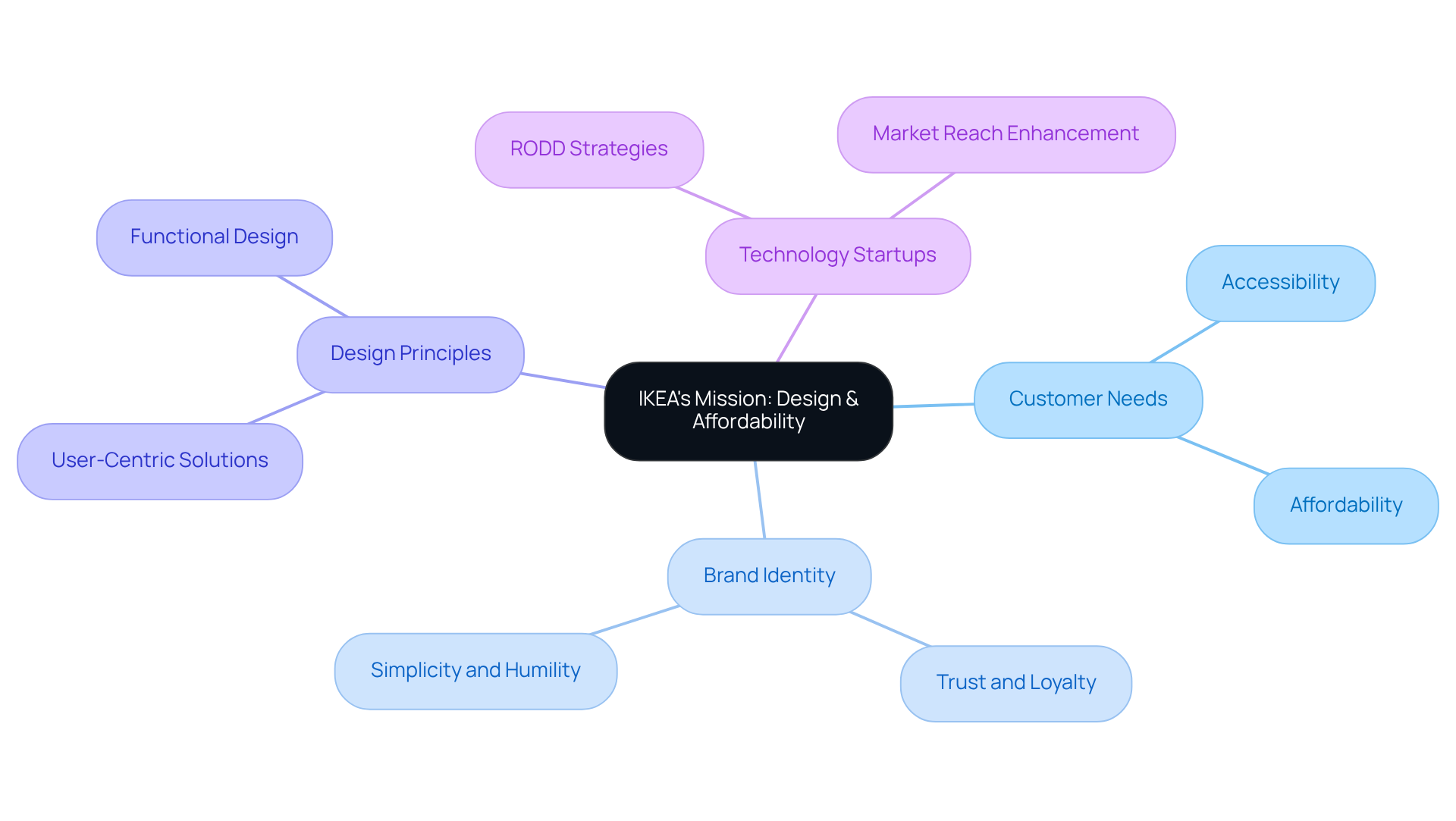
Conclusion
Crafting a compelling business mission statement is essential for technology startups aiming to establish their identity and connect with their audience. A well-defined mission not only clarifies a company's purpose but also serves as a guiding framework for decision-making and strategic growth. By articulating their core values and aspirations, startups can effectively navigate the complexities of the digital landscape, ensuring they resonate with both customers and stakeholders.
Throughout this article, we've explored various mission statements from industry leaders like Microsoft, Patagonia, and Tesla, illustrating the diverse approaches tech companies can take to define their purpose. Key insights reveal the importance of inclusivity, sustainability, customer engagement, and social responsibility. Each example underscores how a strong mission can foster deeper connections with consumers, enhance brand loyalty, and ultimately drive success in a competitive market.
As technology startups embark on their journey, embracing the principles of purpose-driven branding becomes vital. By prioritizing clarity, inclusivity, and social impact in their mission statements, these companies can not only meet the expectations of today's consumers but also contribute to a more sustainable and innovative future. The path to success is paved with a commitment to crafting mission statements that inspire, engage, and resonate deeply with their audience.
Frequently Asked Questions
Why is a business mission statement important for technology startups?
A business mission statement is crucial for technology startups as it articulates their core values and objectives, helping to build a strong digital presence and connect with their audience. It acts as a guiding light for navigating their digital journey.
How can a well-defined mission statement impact a startup's success?
A well-defined mission statement can lead to a deeper understanding of market demand, which is vital since 42% of startup failures are linked to misinterpreting this demand. It helps startups clarify their vision and purpose, steering them toward success.
What approach does RNO1 take in crafting mission statements?
RNO1 utilizes design methodologies that enhance branding, user experience, and digital marketing strategies to create purpose declarations that resonate with modern technology brands and inspire action and engagement.
Can you give an example of a successful mission statement from a well-known company?
Microsoft’s mission statement, "to empower every person and every organization on the planet to achieve more," exemplifies a commitment to inclusivity and innovation, serving as a model for technology ventures aiming to establish a strong brand identity.
What practical steps can technology companies take to develop their mission statement?
Technology companies should involve team members in the creation process, ensure clarity and brevity, and regularly revisit the declaration to keep it relevant, which fosters a culture of empowerment and community growth.
How does Patagonia's mission statement relate to sustainability?
Patagonia's mission, "to build the best product while causing no unnecessary harm," emphasizes the brand's commitment to sustainability, shaping its identity and resonating with environmentally conscious consumers.
What are the benefits of aligning a startup's mission with sustainability?
Aligning with sustainability can enhance consumer loyalty, especially among Gen Z, who favor sustainable companies. Brands that prioritize sustainability can see higher repeat purchase rates and foster a loyal community that values responsible innovation.
What statistics highlight the importance of sustainability in business?
Research indicates that 91% of Gen Z consumers prefer sustainable companies, and 76% of consumers would stop supporting businesses that neglect environmental and community welfare, emphasizing the need for technology companies to integrate sustainability into their objectives.




